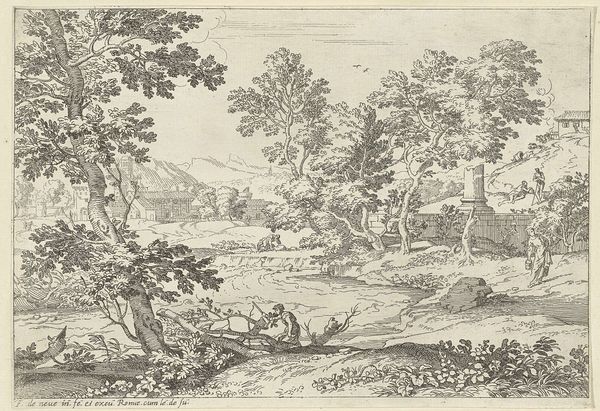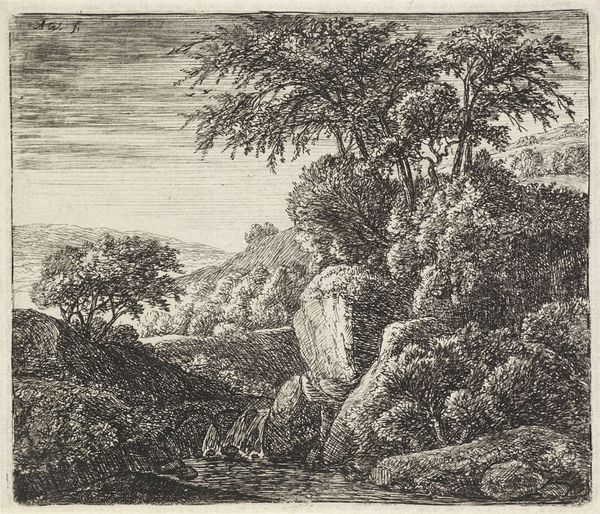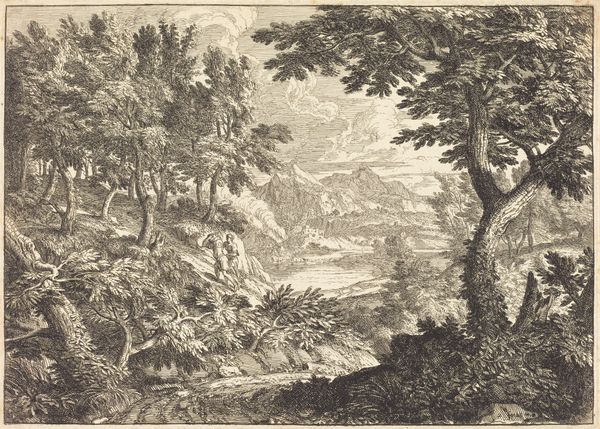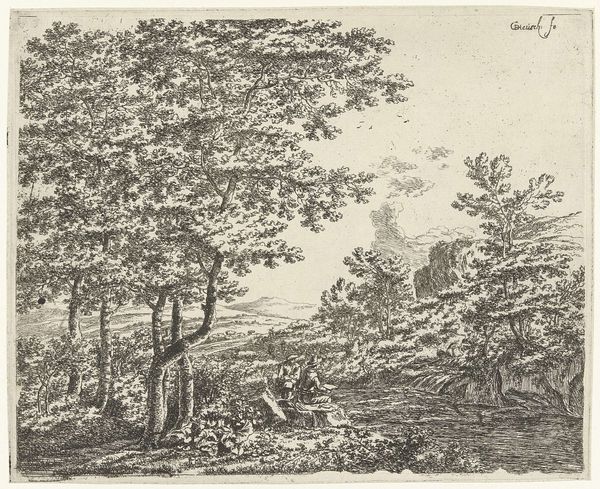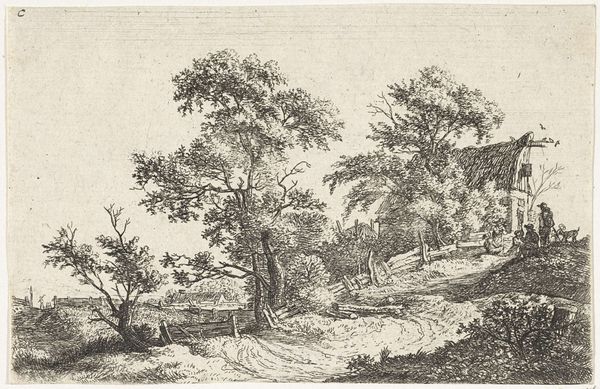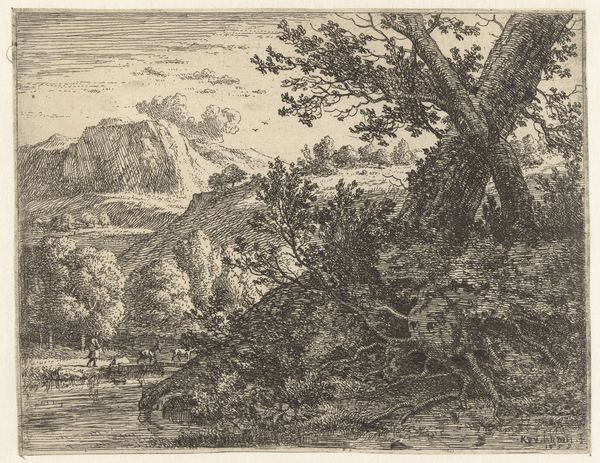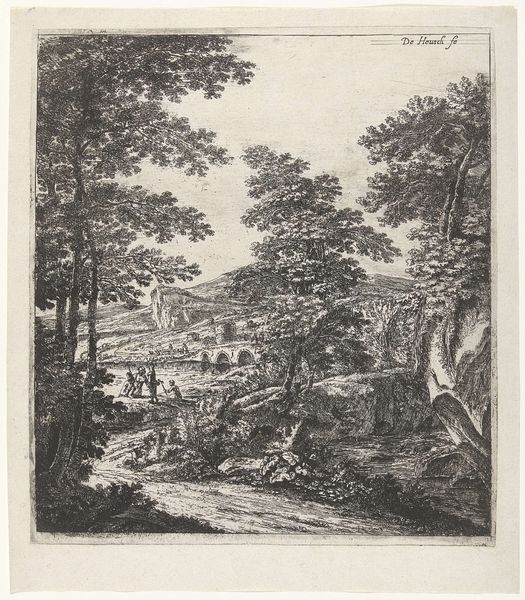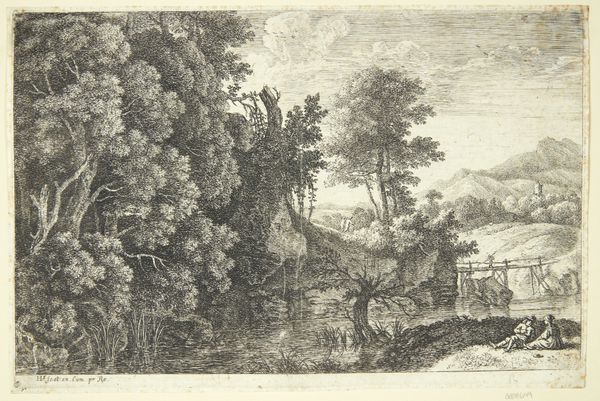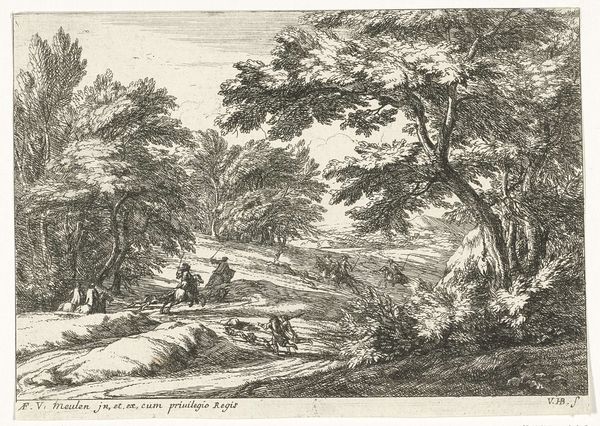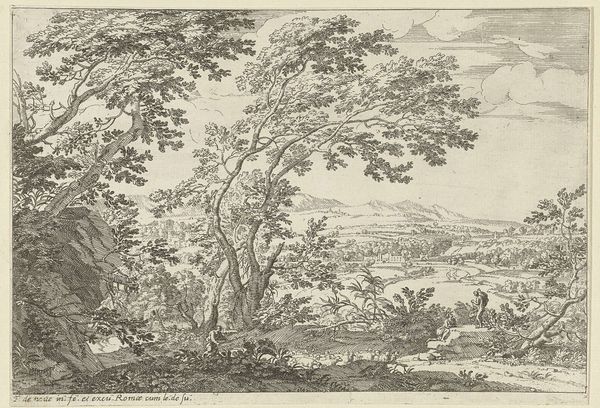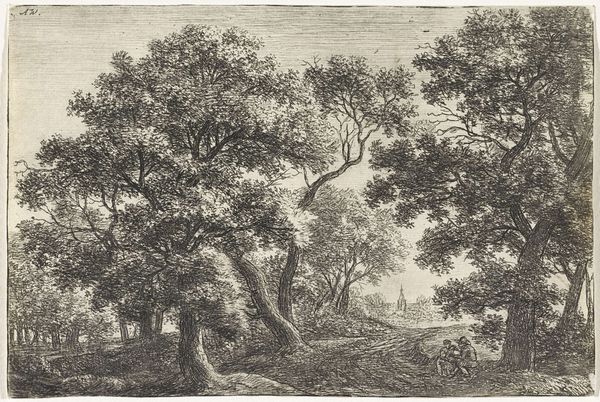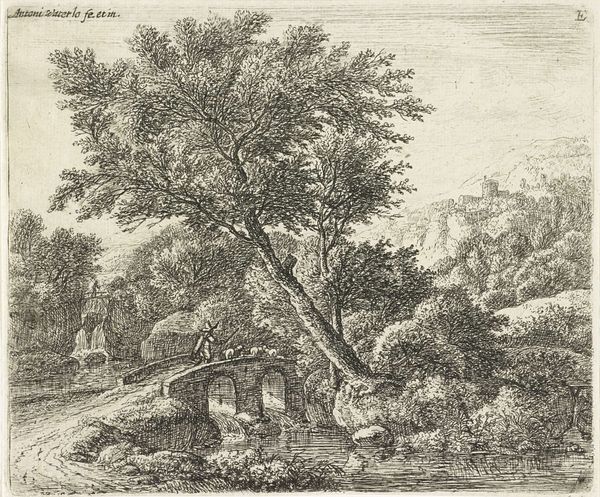
drawing, etching, ink
#
pen and ink
#
drawing
#
ink drawing
#
pen drawing
#
etching
#
landscape
#
ink
#
genre-painting
Dimensions: height 141 mm, width 167 mm
Copyright: Rijks Museum: Open Domain
Curator: This is a captivating etching titled "Landschap met spinster," which translates to "Landscape with Spinner," attributed to an anonymous artist and estimated to have been created sometime between 1635 and 1742. Editor: My first impression is that of a calm, slightly melancholic pastoral scene. The meticulous lines create a sense of detail and quietude, like a captured breath of rural life. The dense foliage contrasted with the distant mountains is visually arresting. Curator: It's interesting that you note the melancholic feeling. Considering the potential social context of its creation, this artwork captures not only a rural scene, but also gives insight into the daily lives of working-class individuals. Spinners, primarily women, contributed significantly to textile production, a critical industry in this era. Editor: Absolutely. Etching as a process is itself indicative. It democratized image production to an extent. We must consider who had access to create, disseminate, and consume such imagery and within which social spheres. Who commissioned the print and why? Was it intended as fine art or something more broadly distributed? Curator: The lack of known authorship opens the door for interesting speculation regarding art-making and distribution models of the era. How were artistic skills acquired and transferred? And was "Landschap met spinster" simply a representation of idyllic country living, or was it making some form of social or political commentary? Editor: Indeed, examining the material quality and technique helps one imagine its original reception. This ink likely wasn’t costly, suggesting this piece targeted broader consumption than if expensive paints had been deployed. I note that the printmaking tradition often reproduced artwork for popular culture consumption. Curator: Looking at the etching itself, the use of line to create texture, light, and volume, makes us think about the cultural value of handcrafted techniques in the early modern world. We can explore the transition between traditional and mechanical modes of production, which has had lasting impacts in culture and artistic practices. Editor: I agree. This analysis has been invaluable for contextualizing this landscape and connecting the socio-political aspects of this work to its historical existence. Curator: And looking at this from the point of material availability has expanded how we should consider artistic labour. It reveals the relationship to industrial change as much as cultural practices in history.
Comments
No comments
Be the first to comment and join the conversation on the ultimate creative platform.
